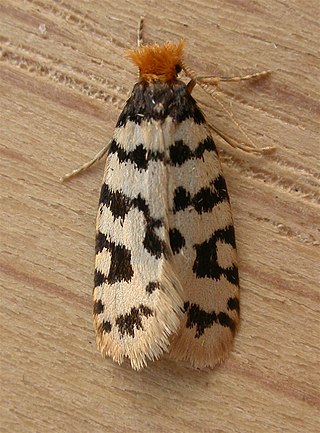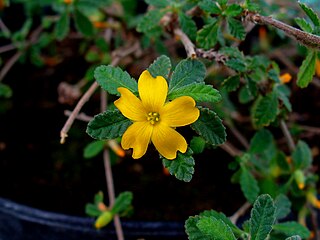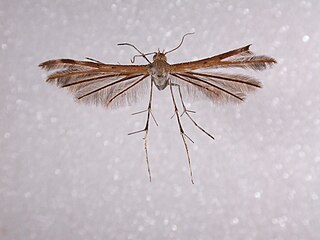
Lepidoptera or lepidopterans is an order of winged insects that includes butterflies and moths. About 180,000 species of the Lepidoptera have been described, representing 10% of the total described species of living organisms, making it the second largest insect order with 126 families and 46 superfamilies, and one of the most widespread and widely recognizable insect orders in the world.

The Psychidae are a family of the Lepidoptera. The bagworm family is fairly small, with about 1,350 species described. Bagworm species are found globally, with some, such as the snailcase bagworm, in modern times settling continents where they are not native.

The Sphingidae are a family of moths commonly called sphinx moths, also colloquially known as hawk moths, with many of their caterpillars known as "hornworms"; it includes about 1,450 species. It is best represented in the tropics, but species are found in every region. They are moderate to large in size and are distinguished among moths for their agile and sustained flying ability, similar enough to that of hummingbirds as to be reliably mistaken for them. Their narrow wings and streamlined abdomens are adaptations for rapid flight. The family was named by French zoologist Pierre André Latreille in 1802.

The luna moth, also called the American moon moth, is a Nearctic moth in the family Saturniidae, subfamily Saturniinae, a group commonly named the giant silk moths.

Centaurea diffusa, also known as diffuse knapweed, white knapweed or tumble knapweed, is a member of the genus Centaurea in the family Asteraceae. This species is common throughout western North America but is not actually native to the North American continent, but to the eastern Mediterranean.

Turnera diffusa, known as damiana, is a shrub native to southern Texas in the United States, Mexico, Central America, South America, and the Caribbean. It belongs to the family Passifloraceae.

The diamondback moth, sometimes called the cabbage moth, is a moth species of the family Plutellidae and genus Plutella. The small, grayish-brown moth sometimes has a cream-colored band that forms a diamond along its back. The species may have originated in Europe, South Africa, or the Mediterranean region, but it has now spread worldwide.

Lophophora diffusa, commonly known as false peyote, is a species of plant in the family Cactaceae and one of the species in the Lophophora genus. It is endemic to Mexico in the outskirts of Querétaro. This species contains zero to trace amounts of mescaline; pellotine, whose psychoactive effects are comparatively minimal, is the principal alkaloid. The species name diffusa refers to the flat tubercles that are outspread without the plant having prominent ribs.

Agapeta zoegana is a species of moth known as the sulphur knapweed moth and the yellow-winged knapweed root moth. It is used as an agent of biological pest control against noxious knapweeds, particularly spotted knapweed and diffuse knapweed.

Megalorhipida leucodactyla is a species of moth of the family Pterophoridae that has a pantropical distribution.

Diphthera festiva, the hieroglyphic moth, is a species of moth in the family Nolidae and is the only moth in its subfamily Diphtherinae. It is found in the tropical and subtropical areas of South America, Central America, North America, and the Caribbean. In North America, the species has a southeastern distribution from South Carolina west to Texas along the Gulf Coast. Strays have been recorded as far north as Michigan and Missouri. The wingspan is 37–48 mm (1.5–1.9 in). This species is occasionally considered a pest on soybeans. It was described by Johan Christian Fabricius in 1775.
Mouralia is a genus of moths of the family Noctuidae, consisting of only one species Mouralia tinctoides. It is found from Florida to South-east Texas, Georgia, Southern California, the Antilles, from Mexico through Brazil to Northern Argentina and in Peru.

Hippotion boerhaviae, the pale striated hawkmoth, is a moth of the family Sphingidae.

Boerhavia diffusa is a species of flowering plant in the four o'clock family which is commonly known as punarnava, red spiderling, spreading hogweed, or tarvine. It is taken in herbal medicine for pain relief and other uses. The leaves of Boerhavia diffusa are often used as a green vegetable in many parts of India.

Phlox diffusa is a species of phlox known by the common name spreading phlox. It is native to western North America from British Columbia to the southwestern United States to the Dakotas, where it grows in many types of habitat, including rocky, high elevation mountain slopes. It is a very compact mat-forming perennial herb growing in cushions or patches of short, decumbent stems. The linear, lance-shaped, or needle-like leaves are no more than 1.5 centimeters long and are oppositely arranged in bundles on the short stems. The inflorescence is a solitary tubular flower around a centimeter long. It has a flat white or pale pink or blue corolla with five lobes each just under a centimeter in length.
Commelina mosaic virus (CoMV) is a plant pathogenic virus in the genus Potyvirus and the virus family Potyviridae. Like other members of the Potyvirus genus, CoMV is a monopartite strand of positive-sense, single-stranded RNA surrounded by a capsid made for a single viral encoded protein. The virus is a filamentous particle that measures about 707-808 nm in length. This virus is transmitted by two species of aphids, Myzus persicae and Aphis gossypii, and by mechanical inoculation.

Canscora diffusa is a plant species in the genus Canscora. Diffutidin and diffutin are flavans, a type of flavonoid, found in C. diffusa.

Pterolonche inspersa, sometimes called the brown-winged knapweed root moth, is a small moth of the family Pterolonchidae.

Gorteria diffusa is a highly variable, small annual herbaceous plant or rarely a shrublet that is assigned to the daisy family. Like in almost all Asteraceae, the individual flowers are 5-merous, small and clustered in typical heads, and are surrounded by an involucre, consisting of in this case several whorls of bracts, which are merged at their base. In G. diffusa, the centre of the head is taken by relatively few male and bisexual yellow to orange disc florets, and is surrounded by one complete whorl of 5–14 infertile cream to dark orange ray florets, sometimes with a few ray florets nearer to the centre. None, some or all of them may have darker spots at their base. The fruits remain attached to their common base when ripe, and it is the entire head that breaks free from the plant. One or few seeds germinate inside the flower head which can be found at the foot of plants during their first year. The species flowers between August and October. It is called beetle daisy in English and katoog in Afrikaans. It can be found in Namibia and South Africa.
Naranga diffusa, the rice green semilooper, is a moth of the family Noctuidae. The species was first described by Francis Walker in 1865. It is found in many agricultural based countries such as Bangladesh, India, Sri Lanka, China, Hong Kong, Iran, Japan, the Korean Peninsula, Malaysia, Myanmar, the Philippines, Thailand, Taiwan and Vietnam.

















